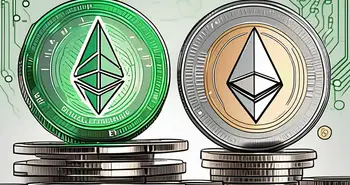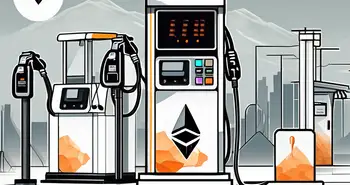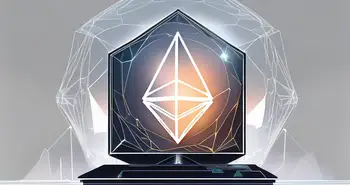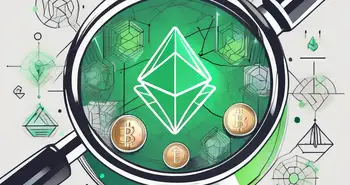Cardano vs. Ethereum: The Ultimate Blockchain Showdown

Introduction
Welcome to the ultimate blockchain showdown! In one corner, we have Ethereum, the reigning champion of smart contracts. And in the other corner, we have Cardano, the up-and-coming blockchain platform that's been making waves with its scientific approach. Did we mention that the founders of both platforms, Charles Hoskinson and Vitalik Buterin, actually worked together on Ethereum? That is why people love to make the comparison between Cardano vs. Ethereum. After some personal issues and technical disagreements, Charles left and created his own chain. Believe it or not, Charles Hoskinson, Cardano's founder, gave away his entire stash of Ethereum to his secretary back in the day. Why you ask? Charles never expected Ethereum to become as popular as it did, and he didn't see the value in holding onto his ETH. Little did he know that those coins would be worth $500 million today! So, which one will come out on top? Let's compare Cardano and Ethereum to see who reigns supreme in the blockchain world.
- Ethereum
- Cardano
- Governance Structure
- Consensus Mechanism
- Transaction Speed and Scalability
- Smart Contracts
- Development and Adoption
- Conclusion
Ethereum
As blockchain technology continues to revolutionize the way we transact and interact online, Ethereum has emerged as a major player. Launched in 2015, Ethereum was founded by a team of developers led by Vitalik Buterin, a prominent figure in the blockchain community.
Ethereum’s main goal is to provide a decentralized platform for building apps and organizations and conducting transactions without relying on a central authority. This means users can maintain control over their personal data and assets without handing them over to a third party.
While Bitcoin introduced the concept of digital currencies, Ethereum took it further by allowing users to build and deploy decentralized applications on its network. This means businesses and individuals can create custom blockchain-based applications to meet their specific needs.
One of the key components of the Ethereum network is its native cryptocurrency, ether (ETH). Ether serves as the fuel for the Ethereum network and is used to pay for the computational power required for every action on the platform. This fee is paid in ETH, so users need to hold at least a small amount of ETH to use the network.
One of the major advantages of Ethereum is its decentralized nature. Unlike traditional financial institutions, which are controlled by centralized entities, Ethereum is governed solely by its community's decentralized participation and cooperation. This means anyone can participate in the network by running a node or a computer with a copy of the Ethereum blockchain data.
As Ethereum just finished “The Merge” successfully, which was seen as a big feat by many, it continues on its long roadmap to upgrade Ethereum and make it more scalable, secure, and sustainable.
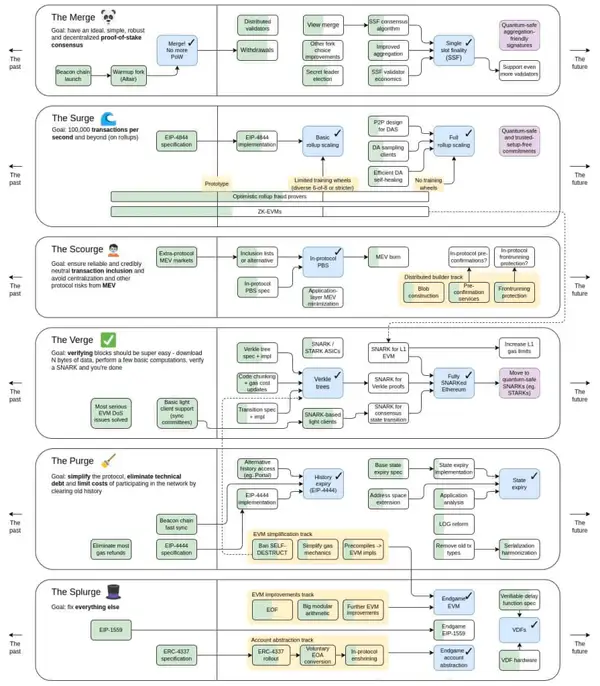
Cardano
Cardano is a blockchain platform that aims to create a decentralized ecosystem that enables individuals to have greater control over their financial assets and personal data. It is a Layer 1 blockchain that is used to deploy decentralized applications, similar to Ethereum. However, Cardano differs from Ethereum and Bitcoin in several ways, according to the founder.
The development of Cardano began in 2015, led by Charles Hoskinson, one of the co-founders of Ethereum, who saw significant flaws in the design of existing blockchains. Hoskinson believed that existing blockchains were not scalable, interoperable, or sustainable enough, and he sought to build a new blockchain that would address these issues. To achieve this goal, Hoskinson partnered with Jeremy Woods and established IOHK (Input-Output Hong Kong), the blockchain company behind Cardano's development.
One of the unique features of Cardano is that it is the first blockchain platform to be founded on peer-reviewed research and developed through evidence-based methods. Cardano has undergone rigorous scientific analysis to ensure it is secure, reliable, and scalable. The platform's development adheres to the highest standards, rooted in science, to provide unparalleled security and lay the groundwork for a trustless world. Whereas Vitalik Buterin said that Ethereum is rather aiming for correctness in heuristic argumentation to do more, faster.
Cardano is also designed to be fully profit-oriented, unlike Ethereum, which has led to tensions between Hoskinson and Ethereum's core developers. The Cardano team believes that being profit-oriented is essential to building a sustainable blockchain platform that can support long-term growth and development.
Participation in Cardano is open and incentivized, meaning anyone can participate in the platform's development and earn rewards. This incentivized participation ensures that the platform is developed by diverse stakeholders with a vested interest in its success.
Cardano's native cryptocurrency is ADA, named after Ada King, Countess of Lovelace, an 18th-century mathematician widely regarded as the mother of computer programming. ADA is used to pay for transactions on the Cardano network. The supply of ADA is decentralized, and new coins are issued only to stakers who secure the network.
In summary, Cardano is a proof-of-stake blockchain platform that addresses the scalability, interoperability, and sustainability issues of existing blockchain platforms. It is founded on peer-reviewed research and developed through evidence-based methods, claiming to provide unparalleled security and laying the groundwork for a trustless world according to its roadmap.

Governance Structure
Decentralized governance is a system where decision-making power is distributed among a network of individuals or entities rather than being centralized in a single authority. In blockchain technology, decentralized governance is critical because it allows for a trustless and transparent decision-making process that can ensure the network's longevity and prosperity.
Both Ethereum and Cardano have developed unique governance structures to facilitate the decision-making process for core protocol changes.
Ethereum's governance model is centered around a decentralized process where anyone can propose changes to the core protocol, which is then reviewed by the community and developers. This process ensures that any changes are secure and widely supported.
On the other hand, Cardano's governance model is defined by its community. The platform's governance model is designed to be truly democratic, with individuals incentivized to play a role in decision-making, and votes are immutably recorded. The Voltaire era of Cardano adds the ability for the community to make impactful decisions about software updates, technical improvements, and funding decisions. The Cardano Improvement Proposals (CIPs) and Funding Proposals (FPs) allow the community to determine the platform's future and fund it from the treasury.
Consensus Mechanisms
Cardano's consensus mechanism is called Ouroboros, which is similar to Bitcoin's Nakamoto-style consensus, but it uses Proof of Stake (PoS) instead of Proof of Work (PoW). With PoS, participants stake the native asset of the network, in this case, the ADA currency, to have the right to make updates to the ledger. The odds of being selected are based on the quantity and amount of time a validator has staked assets. Validators receive rewards in the form of the native currency to incentivize them to stake their assets.
Unlike other PoS implementations like Ethereum 2.0, staked assets are not locked, and there is no penalty for misbehavior by stake pool operators. The staking requirement is only 1 ADA, and delegators can continue to use their assets in dapps while still being a delegator. Staking pools are also an essential part of Cardano's PoS model. Overall, Cardano's Ouroboros consensus mechanism is designed to promote decentralization and community-driven decision-making by giving token holders a direct say in the future of the network.
Also, low hardware and staking requirements resulted in Cardano being one of the most decentralized blockchains in existence, with over 3,000 stake pools and around 70% of total ADA staked.
Ethereums PoS implementation is, however, not too different; abide by some of the differences like lock-up. The Ethereum Merge was highly anticipated and went through flawlessly in 2022. With this transition, Ethereum went from a Proof-of-Work mechanism to a Proof-of-Stake mechanism, making it more similar to Cardano. With that change, Ethereum managed to use 99% less energy.

So overall, both staking mechanisms are rather similar, and Ethereum stakers are promised to withdraw their staked ETH. The consensus mechanism has worked well for both blockchains, so there is no clear advantage of one over the other. What must be stated, though, is that 70% of staked ETH is on centralized exchanges currently, which is not really in favor of decentralization?
Transaction Speed and Scalability
With the implementation of Ethereum 2.0, Ethereum has significantly improved its transaction speed and scalability. Using the Proof-of-Stake (PoS) consensus algorithm and sharding, Ethereum 2.0 can process anywhere from 20,000 to 100,000 transactions per second, which is a massive improvement from its previous rate of 15-30 transactions per second on the Proof-of-Work network. This exponential increase in speed has helped clear up network congestion and kept gas fees low.
In comparison, Cardano's current transaction speed is around 257 transactions per second, faster than Ethereum's previous rate but lags behind Ethereum 2.0's new capabilities. Even though Cardano is maybe developing a bit slower, the roadmap is set out to catch on to Ethereum's new capabilities.
Ultimately, the best approach to scalability depends on the specific needs of the application or use case. Ethereum 2.0's implementation of PoS and sharding offers significant transaction speed and scalability advantages. In contrast, Cardano's approach of using sidechains and sharding may be better suited for specific use cases.
Smart Contracts
Smart contracts are a fundamental feature of blockchain platforms, and they play a critical role in facilitating the execution of complex transactions on the blockchain. Yet, Cardano and Ethereum take a bit different approaches regarding programming languages.
Cardano's smart contracts use Haskell, a programming language that's been around since 1990 and is renowned for its security and robustness. Haskell is a functional programming language that can be challenging for new developers to learn and use effectively. Also, Cardano has developed Plutus, a programming environment that makes it easier to write smart contracts using Haskell. The choice for Haskell was mostly based on the fact that Cardano really emphasizes the scientific approach, and thus Haskell was best suited for that.
In contrast, Ethereum's smart contracts use Solidity, a new programming language heavily influenced by C++, Python, and Javascript. Solidity is one of the most popular programming languages for building smart contracts on blockchains, and it has a large and active developer community behind it.
The advantage of using Solidity is that it's relatively easy to learn and use, and it offers more flexibility and functionality when creating complex smart contracts. Keep in mind, Solidity's ease of use can also be a weakness, as it's been known to have security issues due to its complexity.
The advantage of using Haskell is that it's a secure and robust language, making it ideal for writing smart contracts. Remember, Haskell's complexity can be a disadvantage, as it requires more experience and skill to use effectively. Nevertheless, Cardano manages to find enough developers who are able to deliver code. According to a report by DappRadar, Cardano was just slightly behind Ethereum in second place in developer activity.
In conclusion, both Cardano and Ethereum have their strengths and weaknesses when it comes to smart contracts. Ethereum's Solidity language is more accessible, making it popular among developers, while Cardano's Haskell language prioritizes security and robustness. Ultimately, the choice between the two will depend on the specific needs of the project at hand.
Development and Adoption
When discussing the development and adoption of both Ethereum and Cardano, we might refer again to what Vitalik said:
“They (Cardano) really emphasize these big academic proofs for everything, whereas Ethereum tends to be more okay with heuristic arguments, in part because it's just trying to do more, faster”
That is also really showing in the real world, as Ethereum is still the leader in development and adoption. Ethereum ranks second after Bitcoin by market cap. According to a survey, Ethereum awareness stood at 19.49% globally, with ownership levels at 2.38% among respondents (owners and non-owners of crypto). However, adoption rates increased when the question was posed to crypto owners, with around 25% of crypto owners holding ETH tokens. Interestingly, for the first five years of its existence, Ethereum had a faster adoption and growth rate than Bitcoin, with ETH addresses being four times more than Bitcoin addresses during this period. This was attributed to the ICO boom that saw thousands of applications and blockchain ecosystems created, all depending on ERC20 tokens.
In 2014, Vitalik predicted three main applications of Ethereum in the whitepaper. The first category encompasses financial applications, which aim to empower users to manage and execute contracts using their money more efficiently. This includes a variety of sub-currencies, financial derivatives, hedging contracts, savings wallets, wills, and even employment contracts. The second category, known as semi-financial applications, integrates money in addition to non-monetary elements such as self-executing bounties for solving complex computational problems. The final category comprises non-financial applications like online voting and decentralized governance, which demonstrate the versatility and potential of the Ethereum platform beyond just financial use cases. Many companies use Ethereum, for example, MakerDAO for a smarter currency, Civic for digital identity, or even Morpher.
Morpher is a trading platform and a market protocol built on the Ethereum blockchain. We virtualize investing by rebuilding the financial markets from the ground up on the blockchain. This enables trading a broad universe of assets 24/7, with infinite liquidity, zero fees, and weekend trading.
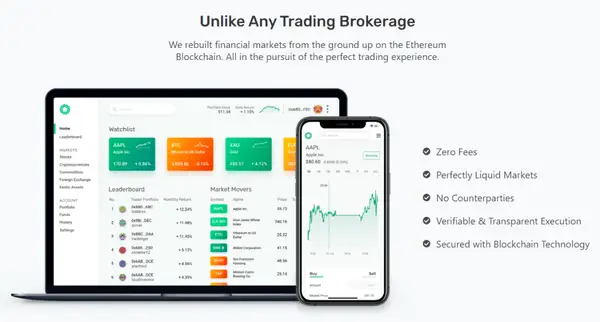
Morpher is the first platform that does not require counterparties, middlemen, or custodians to facilitate trading. More importantly, our mission is to democratize investing by making it available to everyone at zero cost. So, in this case, the Ethereum blockchain allowed for a complete revolution in traditional financial markets.
Cardano currently ranks seventh in market capitalization. Large-scale investors hold 10% of ADA, indicating that retail investors own a significant portion of the cryptocurrency. IOHK has partnered with governments of countries like Georgia and Ethiopia to integrate its enterprise solution into their systems. In another unique collaboration, IOHK partnered with sneaker giant New Balance to use blockchain technology to ensure the authenticity of its sneakers.
The potential future growth is difficult to predict for both projects as only time will show which protocol will have the upper hand. It is more likely that both projects will co-exist and serve their respective markets. What can be said, though, is that currently, Ethereum is the more popular platform in terms of developer activity, community, and availability of documentation and, thus, also the more popular in terms of adoption.
Cardano vs. Ethereum – Verdict
So, who wins the ultimate blockchain showdown between Cardano and Ethereum? Well, it's a tough call. While there are certainly differences between the two platforms – Ethereum might be a bit faster, and Cardano might be a bit more secure – they've become more similar, especially with Ethereum's transition to Proof-of-Stake.
The adoption rate is currently higher for Ethereum, which is definitely something stakeholders are paying attention to. And while Cardano has developed some nifty interoperability features, not too many projects have really been able to take advantage of them yet, according to our subjective assessment.
But here's the thing: Cardano's rigorous approach to development might pay off in the long run. Who knows, even though it will be extremely difficult to pull off, maybe it'll have a higher adoption rate than Ethereum after all. The blockchain world is constantly evolving, so stay tuned for more updates and, as always, do your own research!
PS: To stay updated on the newest developments in the crypto industry, you should check out the best crypto podcasts.

Disclaimer: All investments involve risk, and the past performance of a security, industry, sector, market, financial product, trading strategy, or individual’s trading does not guarantee future results or returns. Investors are fully responsible for any investment decisions they make. Such decisions should be based solely on an evaluation of their financial circumstances, investment objectives, risk tolerance, and liquidity needs. This post does not constitute investment advice.

Painless trading for everyone
Hundreds of markets all in one place - Apple, Bitcoin, Gold, Watches, NFTs, Sneakers and so much more.

Painless trading for everyone
Hundreds of markets all in one place - Apple, Bitcoin, Gold, Watches, NFTs, Sneakers and so much more.





